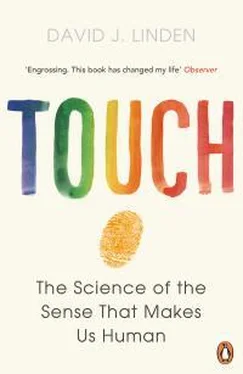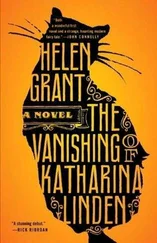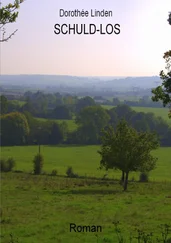26. There is now good evidence that depressed pain-free people are approximately two times more likely to develop chronic musculoskeletal pain than nondepressed pain-free people, and similar findings have emerged for anxiety disorders. Obviously, the causality can flow in both directions: Chronic pain can lead to persistent emotional disorders, too, creating a vicious cycle. D. D. Price, “Psychological and neural mechanisms of the affective dimension of pain,” Science 288 (2000): 1769–72; and K. Wiech and I. Tracey, “The influence of negative emotions on pain: behavioral effects and neural mechanisms,” NeuroImage 47 (2009): 987–94.
27. C. Helmchen, C. Mohr, C. Erdmann, F. Binkofski, and C. Büchel, “Neural activity related to self- versus externally generated painful stimuli reveals distinct differences in the lateral pain system,” Human Brain Mapping 27 (2006): 755–65; and Y. Wang, J.-Y. Wang, and F. Luo, “Why self-induced pain feels less painful than externally generated pain: distinct brain activation patterns in self- and externally generated pain,” PLOS One 8 (2011): e23536.
28. T. Koyama, J. G. McHaffie, P. J. Laurienti, and R. C. Coghill, “The subjective experience of pain: where expectations become reality,” Proceedings of the National Academy of Sciences 102 (2005): 12950–55; J.-K. Zubieta and C. S. Stohler, “Neurobiological mechanisms of placebo responses,” Annals of the New York Academy of Sciences 1156 (2009): 198–210; and M. Peciña, H. Azhar, T. M. Love, T. Lu, B. L. Fredrickson, C. S. Stohler, and J. K. Zubieta, “Personality trait predictors of placebo analgesia and neurobiological correlates,” Neuropsychopharmacology 38 (2013): 639–46. There is also evidence suggesting that dopamine release in a region called the nucleus accumbens, a key portion of the pleasure circuit, is involved in placebo analgesia.
29. I. Tracey, “Getting the pain you expect: mechanisms of placebo, nocebo and reappraisal effects in humans,” Nature Medicine 16 (2010): 1277–83; and S. Geuter and C. Büchel, “Facilitation of pain in the human spinal cord by nocebo treatment,” Journal of Neuroscience 21 (2013): 13784–90. In a few early studies, the nocebo effect has been linked with activation of a region called the hippocampus, which is involved in memory for facts and events. Further work will determine if this is a causal relationship.
30. P. Posadzki, E. Ernst, R. Terry, and M. S. Lee, “Is yoga effective for pain? A systematic review of randomized clinical trials,” Complementary and Therapeutic Medicine 19 (2011): 281–87; and A. Chiesa and A. Serretti, “Mindfulness-based interventions for chronic pain: a systematic review of the evidence,” Journal of Alternative and Complementary Medicine 17 (2011): 83–93.
31. The more technical term for fight-or-flight response is activation of the sympathetic branch of the autonomic nervous system.
32. D. M. Perlman, T. V. Salomons, R. J. Davidson, and A. Lutz, “Differential effects on pain intensity and unpleasantness of two meditation practices,” Emotion 10 (2010): 65–71; and A. Lutz, D. R. McFarlin, D. M. Perlman, T. V. Salomons, and R. J. Davidson, “Altered anterior insula activation during anticipation and experience of painful stimuli in expert meditators,” NeuroImage 64 (2013): 538–46. For you neuroanatomy mavens, the exact areas activated in these studies are the dorsal anterior insula and the anterior mid-cingulate cortex.
33. J. A. Grant, J. Courtemanche, and P. Rainville, “A non-elaborative mental stance and decoupling of executive and pain-related cortices predicts low pain sensitivity in Zen meditators,” Pain 152 (2011): 150–56.
34. N. I. Eisenberger, “The pain of social disconnection: examining the shared neural underpinnings of physical and social pain,” Nature Reviews Neuroscience 13 (2012): 421–34; and E. Kross, M. G. Berman, W. Mischel, E. E. Smith, and T. D. Wager, “Social rejection shares somatosensory representations with physical pain,” Proceedings of the National Academy of Sciences of the USA 108 (2011): 6270–75. As a control, the recently dumped subjects were asked to look at a photo of a friend (of the same sex as their former partner) with whom they had never had a romantic or sexual relationship.
CHAPTER SEVEN: THE ITCHY AND SCRATCHY SHOW
1. The account of Semanza and Moses Katabarwa is adapted from an article by Elizabeth Landau that appeared on CNN Health on February 2, 2013, entitled “With River Blindness, You Never Sleep,” www.cnn.com/2013/02/02/health/river-blindness. The name of the bacterium that lives in the gut of the roundworm is called Wolbachia . It is a symbiont with the worm, meaning that neither the worm nor the bacterium harm each other. Wolbachia can be killed using certain antibiotics like doxycycline, so combined ivermectin and doxycycline therapy is sometimes used. The only hosts for mature Onchocerca volvulus worms are primates (mice, rats, and other typical lab species are not infected), and this has limited the study of river blindness in the laboratory.
2. In addition to poison ivy, urushiol is found in poison oak and poison sumac.
3. R. P. Tuckett, “Itch evoked by electrical stimulation of the skin,” Journal of Investigative Dermatology 79 (1982): 368–73; and H. O. Handwerker, C. Forster, and C. Kirchhoff, “Discharge patterns of human C-fibers induced by itching and burning stimuli,” Journal of Neurophysiology 66 (1991): 307–15.
4. There is reason to believe that coughing and itching are related sensations, both of which serve to remove an unwanted irritant. They may also share cellular and molecular circuitry in the nervous system. P. C. LaVinka and X. Dong, “Molecular signaling and targets from itch: lessons for cough,” Cough 9 (2013): 8.
5. For a nice discussion of itch-signal processing theories, see A. Dhand and M. J. Aminoff, “The neurology of itch,” Brain , advance online publication, 2013.
6. M. Schmelz, R. Schmidt, A. Bickel, H. O. Handwerker, and H. E. Torebjörk, “Specific C-receptors for itch in human skin,” Journal of Neuroscience 17 (1997): 8003–8; and M. Schmelz, R. Schmidt, C. Weidner, M. Hilliges, H. E. Torebjörk, and H. O. Handwerker, “Chemical response pattern of different classes of C-nociceptors to pruritogens and algogens,” Journal of Neurophysiology 89 (2003): 2441–48. Itch appears to be conducted mostly by slow C-fibers. One of the ways we know that is by temporarily placing a ligature around the arm of a human subject. This will block the conduction of electrical signals through larger A-fibers but not small C-fibers and does not appear to significantly reduce most forms of itch sensation.
7. Q. Liu, Z. Tang, L. Surdenikova, S. Kim, K. N. Patel, A. Kim, F. Ru, Y. Guan, H.-J. Weng, Y. Geng, B. J. Undern, M. Kollarik, Z.-F. Chen, D. J. Anderson, and X. Dong, “Sensory neuron-specific GPCR Mrgprs are itch receptors mediating chloroquine-induced pruritus,” Cell 139 (2009): 1353–65; and Q. Liu, H.-J. Weng, K. N. Patel, Z. Tang, H. Bai, M. Steinhoff, and X. Dong, “The distinct roles of two GPCRs, MrgprC11 and PAR2, in itch and hyperalgesia,” Science 4 (2011): ra45.
8. The full name of NPPB is natriuretic peptide B. It’s a peptide messenger that was initially identified as a regulator of cardiac function.
9. S. K. Mishra and M. A. Hoon, “The cells and circuitry for itch responses in mice,” Science 340 (2013): 968–71.
10. L. Han, C. Ma, Q. Liu, H.-J. Weng, Y. Cui, Z. Tang, Y. Kim, H. Nie, L. Qu, K. N. Patel, Z. Li, B. McNeil, S. He, Y. Guan, B. Xiao, R. H. LaMotte, and X. Dong, “A subpopulation of nociceptors specifically linked to itch,” Nature Neuroscience 16 (2013): 174–82.
Читать дальше












